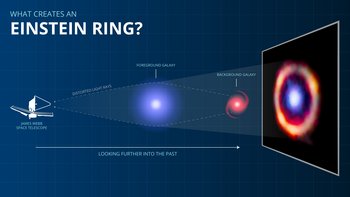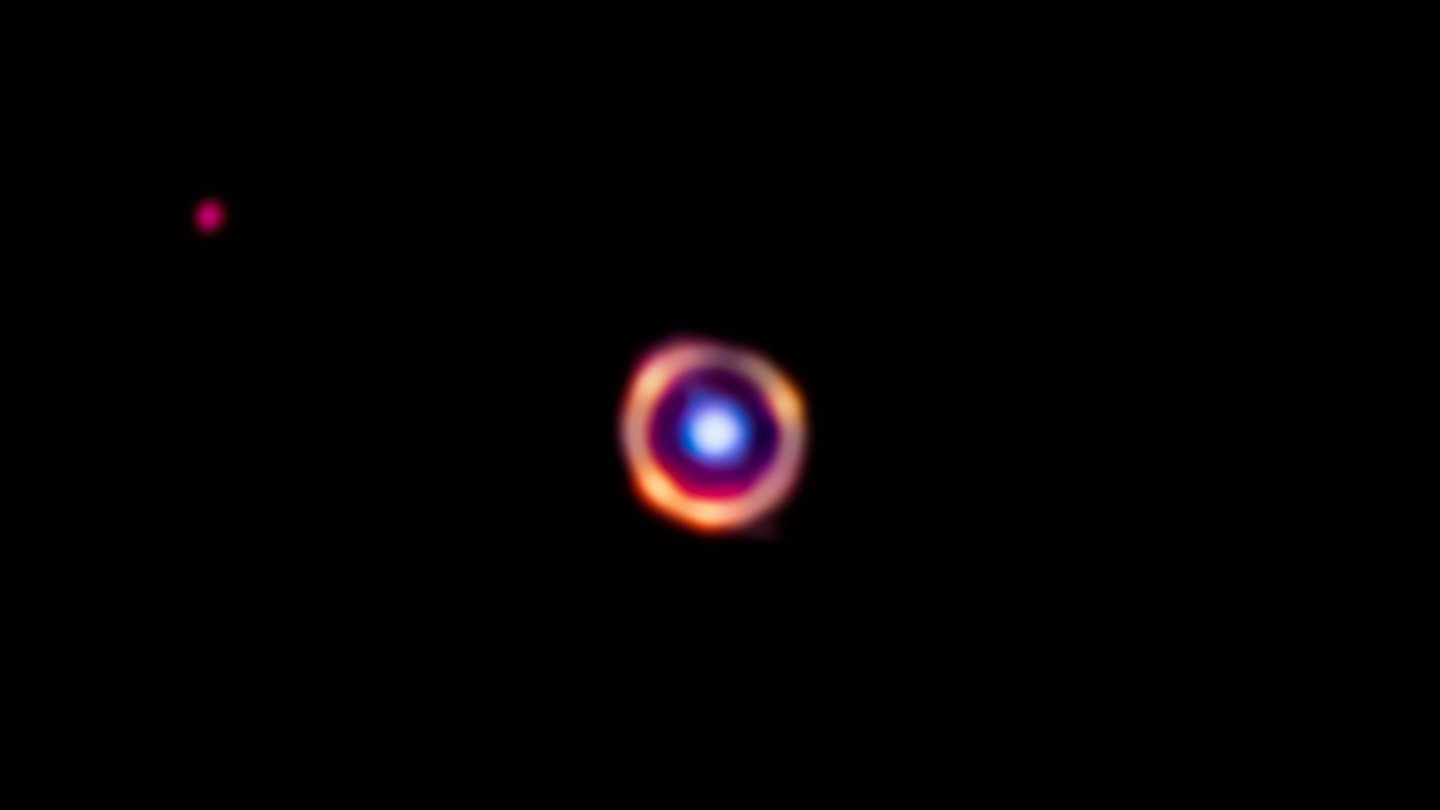A new image taken by the James Webb Telescope allows us to delve deeper into the history of galaxies in the early universe: a research group used the image to discover complex organic hydrocarbons in a galaxy 12 billion light-years away. Particles of this type have not been found before until now. Investigations into the distant galaxy are made possible by a so-called gravitational lensing effect, the team reports in the journal Nature.
Albert Einstein predicted the effect of gravitational lensing in his general theory of relativity. It occurs when two galaxies are completely behind one another as seen from Earth. The background galaxy’s light is then deflected by the foreground galaxy’s gravitational pull. The foreground galaxy acts as a magnifying glass and the background galaxy can be observed enlarged as a ring structure. This loop is also called the Einstein loop.

How is an Einstein ring formed?
Justin Spilker of Texas A&M University in the USA and his team used this effect to study the galaxy SPT0418-47. Zoomed in from behind another galaxy, some 12 billion light-years away, so its light took billions of years to reach us. For comparison, our universe is now 13.8 billion years old. And so the researchers looked at the galaxy as it appeared in the early universe just 1.5 billion years after the Big Bang.
Although the galaxy SPT0418-47 has been known and studied with various telescopes since 2013, detailed observations can now be made with the James Webb telescope thanks to the foreground galaxy acting as a cosmic lens. Scientists working with Spilker have recorded the infrared spectra of SPT0418-47. They have now discovered certain organic compounds there for the first time – the so-called polycyclic aromatic hydrocarbons.
Such hydrocarbons are widespread on Earth: they contribute to air pollution, for example in smoke, soot or smog. Spilker explains that these large particles are not uncommon in space. Until now, astronomers had interpreted the particles as a signal of newly forming stars. However, the latest research shows that this may not always be true. Because the research group found star-forming regions without special particles, as well as regions with hydrocarbon compounds in which no stars are formed.
Spilker and his team now hope to get a chance to use the James Webb telescope to study more galaxies in the future. They want to know more about the relationship between organic molecules and star formation. They also want to find galaxies that are too small for complex particles to form yet in order to investigate what this means for star formation.

“Social media evangelist. Baconaholic. Devoted reader. Twitter scholar. Avid coffee trailblazer.”








More Stories
Longest jets in the universe discovered – giant particle streams as long as 140 Milky Way galaxies in a row
New method reveals 307 supernova remnants
Snapchat is upping the ante on augmented reality glasses